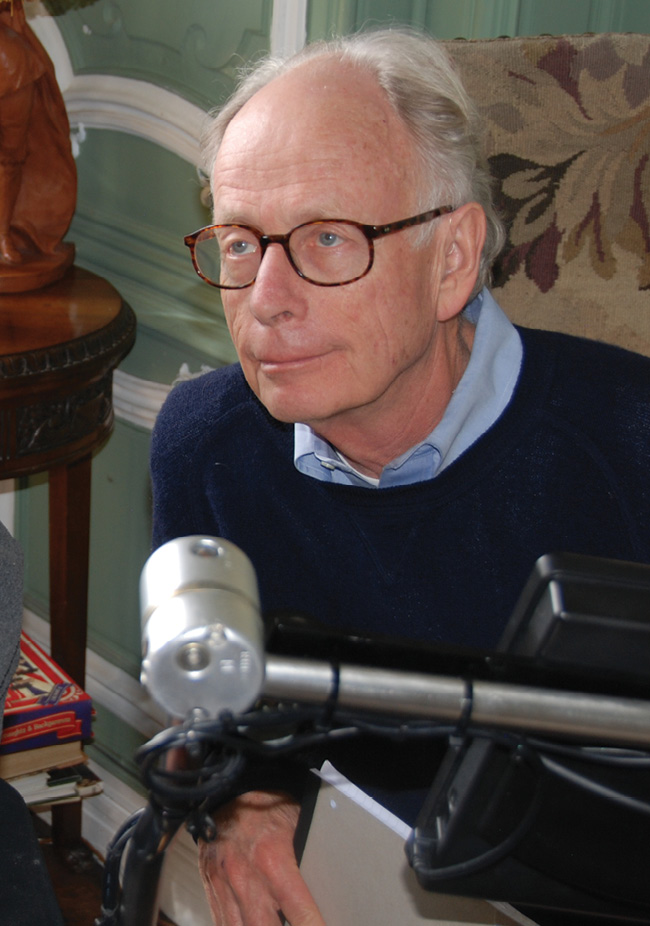James Burkett Hartle
DOI: 10.1063/PT.3.5348
James Burkett Hartle died on 17 May 2023 in Zurich, Switzerland. Known as the father of quantum cosmology, Jim made landmark contributions to the understanding of the origin of the universe.

James Burkett Hartle
DON N. PAGE/COURTESY AIP ESVA/PT COLLECTION

Born in Baltimore, Maryland, on 20 August 1939, Jim obtained his BA in physics in 1960 at Princeton University, where he was mentored by John Wheeler. He earned his PhD in 1964 from Caltech, where he worked in particle physics under Murray Gell-Mann. He remained close friends with both Gell-Mann and Wheeler throughout their lives.
At Caltech Jim attended Richard Feynman’s classes and assisted with lecture demonstrations, including the celebrated bowling-ball example illustrating energy conservation. He also helped with redacting The Feynman Lectures on Physics.
After receiving his PhD, Jim taught at Princeton before going to the University of California, Santa Barbara (UCSB), in 1966. Excited by pulsars, quasars, and the cosmic microwave background, Jim turned away from particle physics. In the late 1960s, he wrote a series of influential papers, one with Kip Thorne, on the dynamics of rotating neutron stars. Jim and Thorne organized regular gatherings between their research groups, which turned into the Pacific Coast Gravity Meetings that still run today.
In 1971 Jim went to Cambridge University and became immersed in the emerging fields of relativistic astrophysics and cosmology. There he met Stephen Hawking; on the same scientific wavelength, they developed a remarkable long-term collaboration. Their 1976 classic paper introduced the Hartle–Hawking quantum state for matter outside a black hole, which is fundamental to black hole thermodynamics.
In a landmark 1983 paper, Jim and Hawking employed their new approach to quantum gravity to rethink the universe on the largest scales. They put forward the Hartle–Hawking “no-boundary” wavefunction, showing for the first time how the conditions at the Big Bang could be determined by physical theory.
Except for a brief stint at the University of Chicago, Jim spent his career at UCSB, which he found congenial, supportive, and inspiring. Jim was a wise and caring mentor to young scientists, and he did much to forge a strong physics community. In 1979 Jim cofounded UCSB’s Institute for Theoretical Physics (now the Kavli Institute for Theoretical Physics), where physicists worldwide convene to discover and debate the frontiers of physics.
The Hartle–Hawking wavefunction revolutionized quantum cosmology and raised tantalizing new questions. Jim began thinking more deeply about how to apply quantum mechanics to the universe as a whole. Throughout the 1990s he and Gell-Mann developed a quantum mechanics formulation, known as the consistent-histories formulation, that clarified the physical nature of Everettian “many worlds” branching and was sufficiently general to describe single closed systems.
While part of some extraordinary collaborations, Jim was also an independent thinker. His numerous single-authored papers, which he approached with enormous care and open-mindedness, are beautifully written and often touch on big, seemingly intractable questions.
In 2003 Jim published Gravity: An Introduction to Einstein’s General Relativity, a gem based on a physics-first approach. With minimal new mathematics and numerous illustrations of observable relativistic effects and experiments, Gravity made Einstein’s theory accessible to physics undergraduates.
Jim liked to wear hand-knitted woolen sweaters and always had a pen and paper—in case he’d get an idea. His suit was reserved for “special occasions,” such as conference dinners, where he was legendary for witty dinner toasts. One of his favorites: “To gravity, the force that keeps our feet on the ground—and money in our pocket.”
In 2005 Jim retired—to focus on physics. In 2006 he became an external professor at the Santa Fe Institute. That year also marks the start of my own collaboration and friendship with Jim. By then he saw the universe truly through a quantum lens. In contrast to most cosmologists, when Jim said “the universe,” he meant the abstract quantum universe, awash in uncertainty, with all its possible histories existing in some sort of superposition.
We took up quantum cosmology again and became immersed in some of the field’s heated debates. Jim, however, seemed unperturbed and calmly set out the beacons. Often we would be joined by Hawking, who by then had great difficulties communicating. Jim would position himself in front of Hawking and probe Hawking’s mind by firing yes–no questions. In that way we fleshed out the predictions of the no-boundary wavefunction. Studying the role of the observer in a quantum universe, we were led to introduce a top-down approach to quantum cosmology in which quantum observations retroactively determine the outcome of the Big Bang.
Few physicists ventured as deeply into their field’s fundamentals as Jim did. In 2021 he published several philosophical reflections in The Quantum Universe: Essays on Quantum Mechanics, Quantum Cosmology, and Physics in General, a rich source of inspiration for how to think about the subject.
Despite his having Alzheimer’s disease, physics remained Jim’s passion and the driving force in his life until the very end. Yet his intellectual curiosity stretched far beyond physics. He was a polymath and an eclectic reader whose wide-ranging interests included Middle Eastern and Mayan archaeology, American colonial history, Russian literature, and eccentric 19th-century female religious figures. But above all, Jim was an exceptionally generous, wise, humble, and gentle man.
More about the Authors
Thomas Hertog. KU Leuven, Leuven, Belgium.
